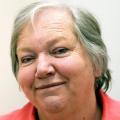IT is easy to think of West Cumbria being founded on coal and steel - and that is certainly true to an extent.
But there is so much more to the district and it only takes a visit to local museums to show that.
When a consultancy was hired to look at how to market Maryport, for instance, the company suggested there was too much going on to define just one thing.
And that was right!
Maryport people dug out the coal and exported from its docks.
But long before coal, there were the Romans. It is believed they chose the top of Camp Road to build a fort in order to provide supplies for those going on to build Hadrian's Wall.
What they left behind is the largest number of altars ever found on a single site in Britain - and many of them can be seen at the town's Senhouse Roman Museum.
Down in town is the Maritime Museum which looks at the ship builders and seafarers from Maryport including the Walker brothers, credited with founding the Japanese merchant navy and Thomas Henry Ismay who bought the White Star Line and launched the ill-fated Titanic.
Fletcher Christian, of Mutiny on the Bounty fame, visited his cousin John Christian in Maryport on many occasions. He was born in Brigham near Cockermouth.
In Cockermouth we find Wordsworth House, the birthplace and early childhood home of Lake District poet, William Wordsworth.
Stepping into that house is like stepping back in time - but a happy time despite what came later in his little life when his father died and his employers refused to pay the money he was owed.
We don't have a lot of room left for Workington, the largest town in the area. The Helena Thompson Museum is usually used to show costumes from different eras which as fascinating to see.
But the town has not forget it real hero Henry Bessemer, who created a process that revolutionised the steel industry on which Workington so depended. The local Wetherspoons is named after him.
So do not worry if the sun don't shine - there is plenty to see in West Cumbria.













Comments: Our rules
We want our comments to be a lively and valuable part of our community - a place where readers can debate and engage with the most important local issues. The ability to comment on our stories is a privilege, not a right, however, and that privilege may be withdrawn if it is abused or misused.
Please report any comments that break our rules.
Read the rules here